| From Redwood National Park in California we turned back to Oregon
in order to visit Crater Lake. This sounds mad, but it was the most
efficient order to do things in. But in order to get there we had first to
follow much of the course of the Rogue River up to the northern end of
Crater Lake National Park. It is designated a 'wild and scenic river' and
fully deserves this description as it rushes and tumbles over the remains of
past eruptions of lava. | 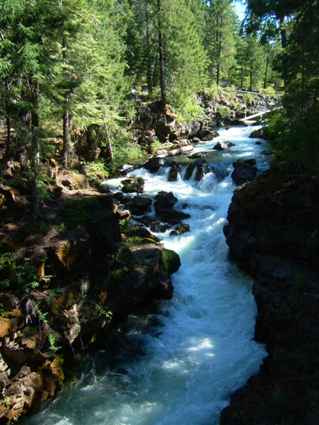 |
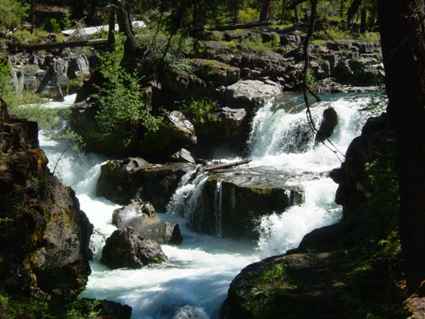 | Rivers in
England are generally placid but here they all seem to be rushing somewhere,
and that leads to waterfalls. This is particularly true when they get
confined as this one is in old lava tubes. |
| This particular spot was of note because the river disappears
underground because the lava tube is still intact but without the lava in
it.. Here it is entering a lava tube, formed when the outside of a flow
cooled and hardened while the molten inside continued to move onward,
leaving a hollow tube; it emerges from the tube 200 feet further on. | 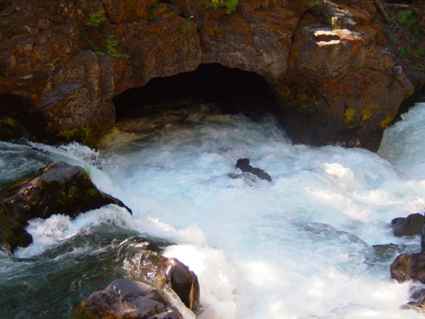 |
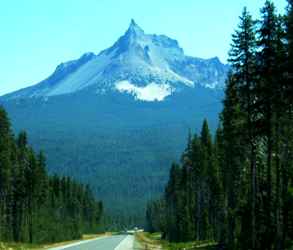 | Our first good
view of the remains of Mt Mazama. This is the volcano which blew its top
over 7000 years ago, creating the crater which was eventually filled by rain
and melt water from the snow that blankets the area for 8 or 9 months of
each year to form Crater Lake. |
| The Pumice Desert is indeed a desert, as very little plant life
has managed to find a foothold. The pumice is about 50 ft deep in this area
but the ash from the eruption covered 8 states and three Canadian Provinces. | 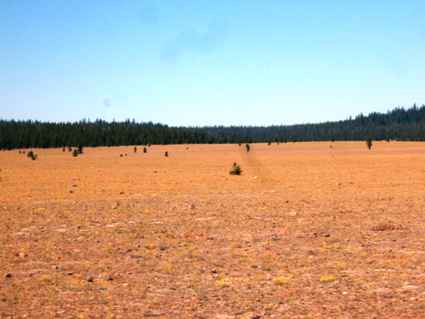 |
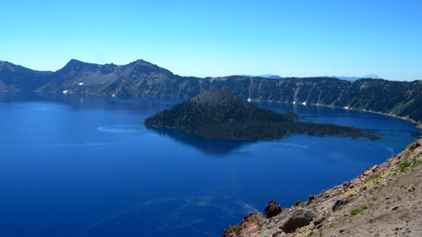 | First sight of the
lake is breathtaking. It is an unbelievably deep shade of blue, surrounded
by the stark remains of the old volcano. The water is very pure and clear,
so that algae can live at greater depths here than anywhere else. The island
in the middle is the result of a later eruption which resulted in just the
tip of the new cone showing above the water. |
| Here and there are stunning rock formations rising thousands of
feet above the water. It takes some believing that these were part of the
crater sides and this volcano crater is six miles wide. The explosion which
blew the top 7700 years ago threw out 150 times more ash than Mt St Helens. | 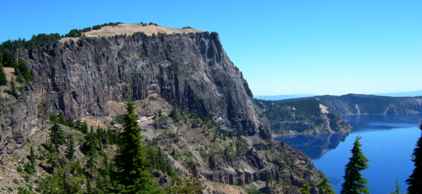 |
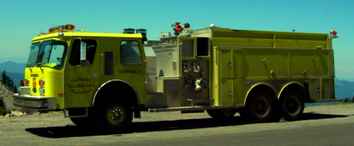 | We spotted one set
of visitors who seemed to be a long way from home, and travelling in an
unusual vehicle - this fire truck is from Alaska. It is a tanker truck and I
wondered how many miles it did to the gallon. |
| As you drive around the lake the light changes, but the intensity
of the blue remains. At just under 2,000 feet deep, Crater Lake is the
deepest lake in the US and one of the deepest in the world. | 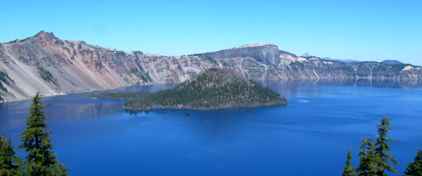 |
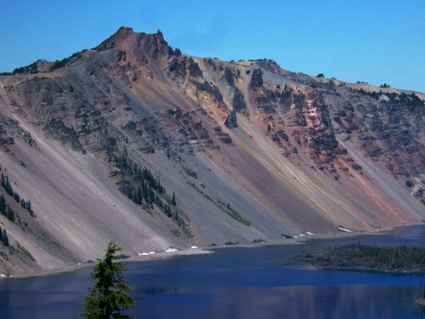 | The lake varies
very little in depth from year to year as it has no outlet for the water
apart from a little seepage. What it loses in evaporation is replaced by the
rain and melting snow, remnants of which can still be seen just above the
edge of the water. |
| An artist's impression of what Mt Mazama would have looked like,
based on the remaining peaks which surround the lake. It always beats me how
the artists fathom out these things. One thing is certain, the sky would
have been black! | 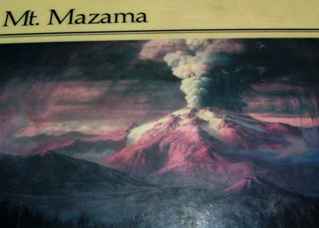 |
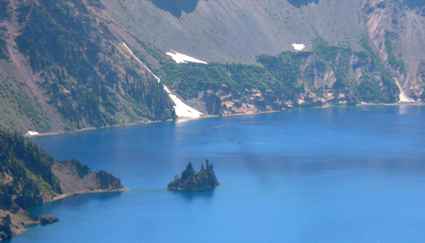 | This small island
is called the Phantom Ship and is an outcrop of the shattered crater wall. |
| Crater Lake is in a mountain range known as the Cascades. Many of
the peaks are volcanic in origin and one only has to look along the horizon at
the cones to realise how active this area has been in the past. | 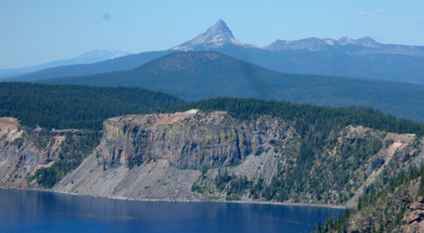 |
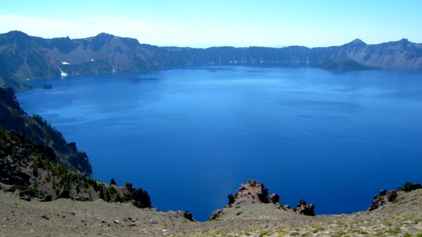 | The rim road
really does follow the rim on the west side and the views and the colour
cannot easily be portrayed in a photograph. We were glad we had made the
effort to come. |
| The swirls in the water are actually pine pollen. The season is
so short here and there are so many trees, sometimes the lake almost turns
yellow. Since there are no rivers feeding the lake it is relatively poor in
nutrients which help prevent algae growth but also limit the size of the
fish. | 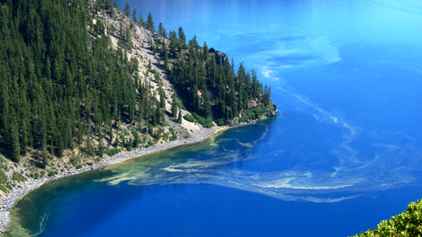 |
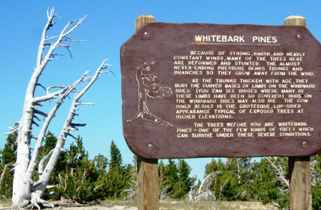 | And the wind
limits the size of the trees and explains why so many are one sided and
lean. The cold frosts on the prevailing northerly winds kill off the shoots
facing the wind. The whitebark pines are one of the few species which can
cope with these adverse conditions. |
|